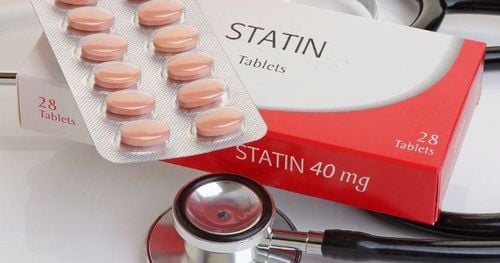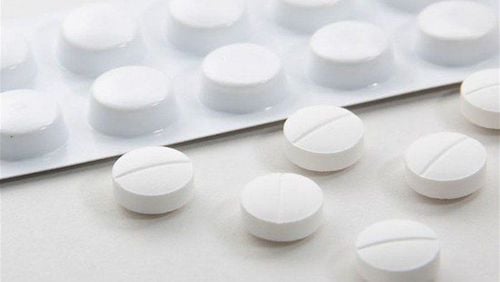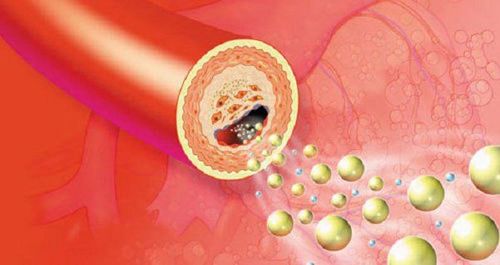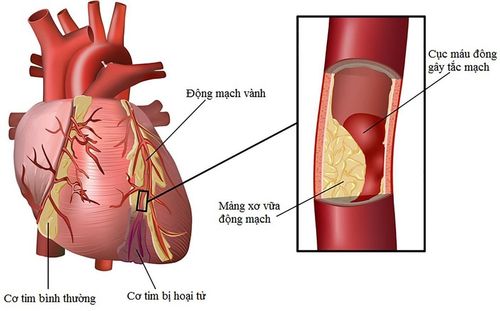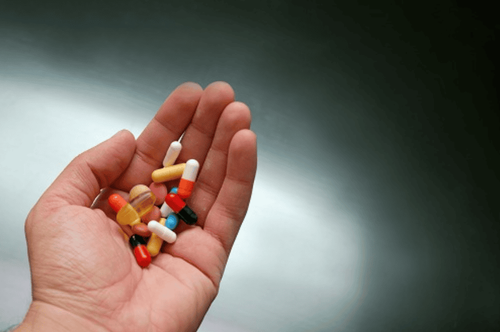This is an automatically translated article.
The article was professionally consulted by Dr. Tran Quoc Tuan - Emergency Medicine Doctor - Emergency Resuscitation Department - Vinmec Phu Quoc International General Hospital. Doctor Tran Quoc Tuan has more than 12 years of experience in emergency resuscitation.Dyslipidemia syndrome is a disorder of lipid metabolism in the blood or an elevated level of lipids in the blood such as cholesterol, triglycerides and other components. Hyperlipidemia is the cause of a series of dangerous diseases such as coronary artery disease, myocardial infarction, atherosclerosis, hypertension, which can lead to stroke or even death from cerebrovascular accident. Currently, treatment methods for hyperlipidemia depend on each group of patients.
1. Treatment goals for hyperlipidemia
Dyslipidemia can be of two types, primary or secondary. For the secondary form, it is necessary to treat the main disease causing the disorder such as diabetes, hyperthyroidism, ... or stop some drugs that cause dyslipidemia such as hypothiazide, cyclosporin,...Treatment goals of hyperlipidemia Blood lipid is the return of lipid parameters to normal or near normal limits, based on the assessment of the patient's risk factors such as coronary heart disease, hypertension, diabetes, smoking, obesity. obesity and the elderly.

Bệnh nhân béo phì
2. Treatments for hyperlipidemia
2.1 Adjusting the diet The diet will be adjusted in 2-3 months without taking the medicine right away. The reason is that in many cases of mild and moderate lipid disorders, just losing weight in combination with a suitable diet can significantly reduce indicators such as cholesterol, triglycerides, especially LDL- cholesterol. Patients need to lose weight if overweight by reducing energy and increasing physical activity. Weight loss will help to effectively correct dyslipidemia, reduce cholesterol and blood triglycerides. Limit the use of animal fat because it contains a lot of saturated fatty acids that increase bad cholesterol in the blood (LDL- cholesterol). Increase the use of vegetable fats, fish are rich in omega-3 unsaturated fatty acids to help reduce bad cholesterol in the blood. Reduce foods such as animal organs, sweet foods that are high in cholesterol. Increase the portion of fresh vegetables, fruits, soy milk and limit alcohol.
Khẩu phần ăn tăng thêm rau củ quả
2.3 Use of medication When the diet is not effective based on the cholesterol index is still above 5.8 mmol/L or the triglyceride is still above 2.3 mmol/L, the patient needs to use the drug but at the same time maintain it. diet in progress.
Currently, the two most common drug classes to treat dyslipidemia are fibrates (lipanthyl, lopid) and statins (zocor, lipitor, lescol, crestor,...).
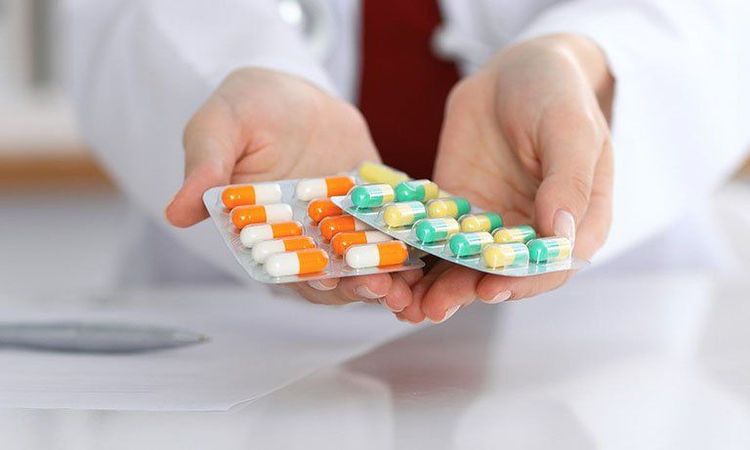
Sử dụng thuốc điều trị bệnh
3. Characteristics of drug groups to treat hyperlipidemia
3.1 Fibrate drug group This is a group of drugs used effectively to help lower blood triglycerides, increase HDL- cholesterol and reduce the risk of myocardial infarction, not critical or death from coronary heart disease in patients with coronary artery disease. have low HDL cholesterol.Fibrates are easily tolerated, with relatively mild side effects, although the risk of muscle damage and rhabdomyolysis is increased when used in combination with statins, the two most commonly used fibrates in practice are gemfibrozil and fenofibrate
Mechanism of action of Fibrate: Lowers blood triglycerides by increasing lipoprotein lipase activity in the effect of hydrolyzing triglycerides from VLDL. In addition, the drug also reduces cholesterol synthesis in the liver and increases cholesterol excretion in the bile, the concentration of HDL-cholesterol increases thanks to the effect of the peroxisome proliferative activating receptor (PPAR).
Some characteristics of the drug to pay attention to include:
Indications : When there is only hypertriglyceridemia or increased cholesterol and blood triglycerides. Dosage: Gemfibrozil is usually used 1200 mg a day divided into 2 times and taken 30 minutes before breakfast and dinner. Fenofibrate is usually given at 145 mg once a day, starting at a low dose in patients with reduced renal function. Side effects: Abdominal bloating, nausea, diarrhea, rash, increased liver enzymes or muscle weakness,... Gallstones may occur more with clofibrate than with other fibrates. Contraindications: Patients with liver failure, kidney failure, gallbladder disease, pregnant and lactating women.
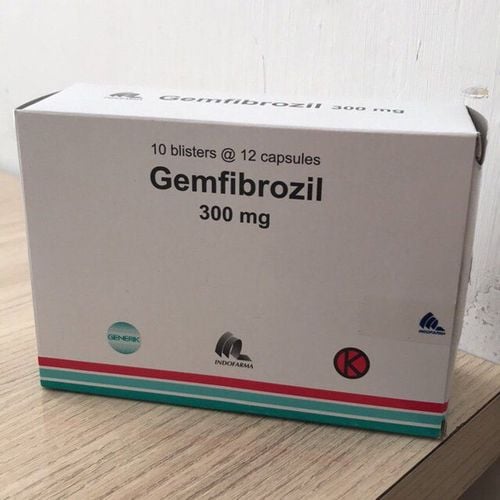
Thuốc gemfibrozil
Mechanism of action of the statin group: HMG CoA reductase inhibition is the main cholesterol-lowering agent, in addition, it also slightly reduces cholesterol. triglycerides and a slight increase in HDL-cholesterol.
Some drug features to pay attention to:
Indications: Primary dyslipoproteinemia type IIa, IIb, prevention of cardiovascular events or patients with familial hypercholesterolemia. Dosage: Depends on the type of statin, but when starting to use it, it is necessary to trace the dose from the lowest with the principle of always using the lowest effective dose. Take the drug before bed because at night is the time when endogenous cholesterol synthesis in the liver takes place most strongly. Side effects: Digestive disorders, headache, rash, elevated liver enzymes, muscle weakness,... Contraindications: Patients with liver failure, kidney failure.
Please dial HOTLINE for more information or register for an appointment HERE. Download MyVinmec app to make appointments faster and to manage your bookings easily.




